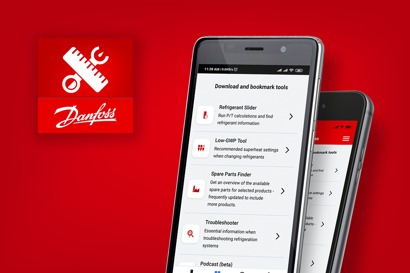General properties
The following types of hydrocarbons are commonly used as refrigerants:
- R290 Propane
- R600a Isobutane
- R1270 Propylene
A number of other hydrocarbons, such as blends containing ethane, propane or butane, are also used as refrigerants.
Propane has been discussed since the late 1980s as a replacement for CFCs and especially R22 (HCFC). Except its high flammability R290 has very similar properties as R22. It has a long history in refrigeration and is thus an interesting candidate. However, its flammability has limited its use. While isobutane (R600a) was introduced in household appliances in some parts of the world from the start of CFC phase out, R290 was introduced later and replaced R134a, R22 or R404A in a wide specter of appliances.

Danfoss Components for Hydrocarbon Refrigeration

Danfoss Learning

The new Ref Tools app
